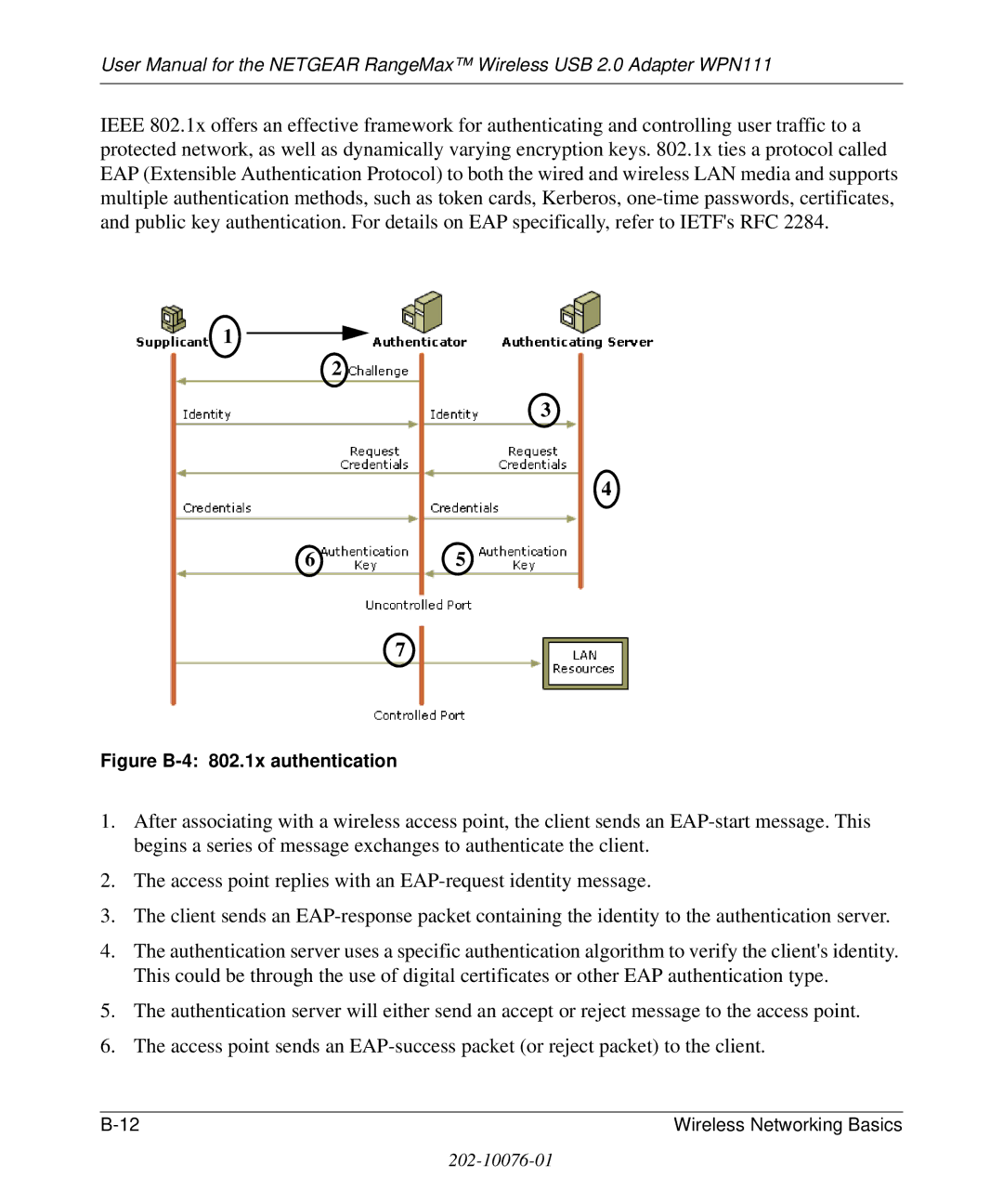
User Manual for the NETGEAR RangeMax™ Wireless USB 2.0 Adapter WPN111
IEEE 802.1x offers an effective framework for authenticating and controlling user traffic to a protected network, as well as dynamically varying encryption keys. 802.1x ties a protocol called EAP (Extensible Authentication Protocol) to both the wired and wireless LAN media and supports multiple authentication methods, such as token cards, Kerberos,
![]() 1
1 ![]()
2
![]() 3
3 ![]()
4
6![]() 5
5 ![]()
![]() 7
7 ![]()
Figure B-4: 802.1x authentication
1.After associating with a wireless access point, the client sends an
2.The access point replies with an
3.The client sends an
4.The authentication server uses a specific authentication algorithm to verify the client's identity. This could be through the use of digital certificates or other EAP authentication type.
5.The authentication server will either send an accept or reject message to the access point.
6.The access point sends an
B | W ire le ss N e tworkin g B a sics |
